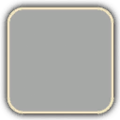Difference between revisions of "Control Point"
(Added a See also section, with a user guide on how to capture efficiently.) |
|||
| Line 110: | Line 110: | ||
[[Category:Game modes]] | [[Category:Game modes]] | ||
| − | + | == See Also == | |
| − | + | * [[Capping (competitive)]]. User guide to capturing efficiently. | |
| − | [[ | ||
Revision as of 14:03, 12 October 2010
| “ | This point ain't gonna cap itself! Get over here!
Click to listen
— The Engineer
|
” |
See also: Control points
Control point maps have two main types of game modes.
Control points are circular platforms with a team-colored light in the center (neutral points will have a white light). To capture a point owned by the enemy team, the player simply stands on the point until the capture meter fills with your team color. The more people of the same team on a point, the faster it will capture, though only to a limited extent. Scouts and those wielding a Pain Train count as 2 players when capturing points. No capture progress will be made when players of both teams are on the point. If all the capturing players are killed or driven off before the capture is completed, the capture progress will not reset immediately but instead will slowly fade away.
There are three statuses for a Capture Point:
There are two main types of control point maps – Standard Control Point and Attack/Defend maps:
Contents
Standard control point
Standard control point (or Linear Control Point) maps play symmetrically. Both teams start with an equal number of two controlled points and a central point starts out controlled by neither team. The team that captures all the points wins. Traditional Control Point maps will go into Sudden death (or Stalemate) if no team captures all the points before times runs out. Control points close to a team's spawn point are captured more quickly by the enemy team.
Standard control point maps:
Attack/Defend
Attack/Defend maps play asymmetrically. RED begins with all the points in their control. BLU wins if it captures all of RED's points. Points may only be captured in a set order (though some maps, such as Gravel Pit and Steel, may make exceptions). RED wins if it prevents BLU from capturing all points before the timer expires. Points captured by BLU are typically locked and cannot be taken back.
Attack/Defend maps can come in various styles. Some maps such as Dustbowl and Egypt require BLU, the attacking team, to go through multiple stages before they can ultimately win the map. If the attacking team fails to win each stage, teams will switch and the defenders will then take turn to be the attackers. Other maps such as Gravel Pit and Junction, allow the attacker to capture two points in no particular order (points A or B) before attacking the final point (point C). Steel is a unique Attack/Defend map in that capturing each minor capture point (points A,B,C and D) will allow better accessibility to the main point (point E), such as allowing more routes into point E or extending bridges to the point so that classes other than the Scout, Soldier, Demoman or sentry jumping Engineers can capture it.
Control Point maps
Control point maps carry the cp_ prefix.
Standard control point
| Map | File Name | |
|---|---|---|

|
Badlands | cp_badlands |
| 100px | Coldfront | cp_coldfront |

|
Fastlane | cp_fastlane |

|
Freight | cp_freight_final1 |

|
Granary | cp_granary |

|
Well | cp_well |
| 100px | Yukon | cp_yukon_final |
Attack/Defend
| Map | File Name | |
|---|---|---|

|
Dustbowl | cp_dustbowl |

|
Egypt | cp_egypt_final |

|
Gorge | cp_gorge |

|
Gravel Pit | cp_gravelpit |

|
Junction | cp_junction_final |

|
Steel | cp_steel |
See Also
- Capping (competitive). User guide to capturing efficiently.



